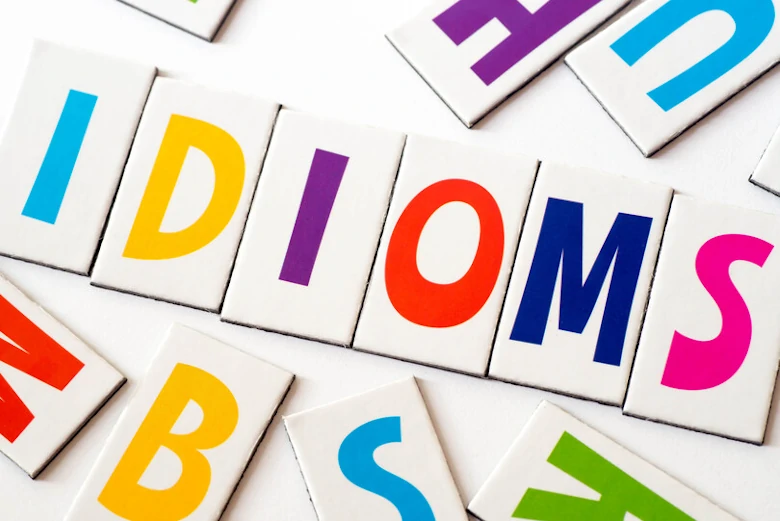Vocabulary Cloze & Comprehension Open Ended
In this article, we will solve questions on comprehension and vocabulary to better understand these topics. These are some of the very important topics from a PSLE standpoint, as well as for the Primary 6 English class.
- Comprehension Open Ended
- True / False Questions
- Authorial Technique
- Vocabulary Cloze
- 2 passage practice
True False Questions
Answer Guide
- Read the question carefully to identify the paragraph(s) from which you can derive your answer.
- Only give information that addresses the given statement.
- Ensure that every part of the statement is accurate if you answer ‘true’. The statement only needs to be partially incorrect to be considered ‘false’.
Authorial Technique Questions
Answer Guide
- Carefully read the question
- If the question asks for tone, describe the feelings the author has toward its subject
- If the question asks for mood, describe the feelings the specified part of the passage conveys to the reader
- Think about the Tone or Mood
- Find key descriptive words that indicate the tone or mood and imply connotation
- It is often helpful to identify positive or negative connotations
- Try to find approximate synonyms for the answer choices in the passage
Story Time
The Last Tiger (Paragraph 1)
The room was quiet, closed-in, and dark but for the low rumble of deep breathing and two burning eyes in the corner. Edward paused at the door. “Smell that?” the man asked. “That’s the smell of a living tiger.” Taking up most of the room was a giant cage with smooth silver bars. Plastic branches were arranged to imitate the long-lost forests. The tiger was lying at the very back - crisp black and dull orange stripes, great paws stretched out in front, hind legs and rump like a shadowy mountain range. The animal did not cower or cringe, but neither did it attack. It just watched.

Image Credit: unsplash.com
The Last Tiger (Paragraph 2)
“Looks uncannily life-like doesn’t it? Most of its original flesh and bones remain intact. Don’t worry. You will get your money’s worth. You need to understand that unlike a real animal with a functioning heart and other internal organs, this tiger’s heart and other internal organs needed a synthetic maintenance system in the form of a microchip installed in its brain. So no, the tiger is not purely natural. But it is still the most alive animal you will find in this day and age. Do you want it or not?” Edward could feel the tiger’s eyes boring into him. He could not say no.
The Last Tiger (Paragraph 3)
The man continued, “And I need to teach you how to look after a living thing. It requires a lot more care than you will be used to. Like all living things, the tiger needs to be fed. Always remember to feed it.”

Image Credit: pexels.com
The Last Tiger (Paragraph 4)
The Last Tiger certainly was a lot of work to look after. It needed feeding several days a week: massive, raw chunks of nutrient-enhanced protein slab. “Think of it as a battery,” the little man had said. “One that needs to be changed regularly.” The Last Tiger was high maintenance indeed. As well as food, it needed water. Clean, fresh water was even harder and more costly to get hold of, but Edward had been instructed to keep a large bowl full of it, to monitor and top up as required. It seemed the creature would shut down completely if he failed to do this. Initially, the Last Tiger could not get along with the other animals. It had tried to attack the hydrogen-fuelled elephant and left deep scratch marks in the paint down its steel legs. It had cracked the solar bird and cracked many of the panels in its wings. After a few initial problems, the Last Tiger settled into its new home.
The Last Tiger (Paragraph 5)
In the end, Edward reprogrammed the other animals to remain in the outer gardens and invested in an ionic fence to confine the Last Tiger to the left wing of the house. It tried to climb trees, but the plaster and the thin mesh frames of the artificial trees crumbled beneath its weight. It scratched in the grass, tearing up great strips of plastic lawns. Edward replaced the trees with holograms. He could not do much about the grass. It seemed to like Edward, at least. Thanks to the electric shock it received the first time it tried to bite his hand, it learned that Edward was not for eating. After a while, it started following him around like a faithful watchdog. The once aggressive creature had now become a more docile one. Edward grew accustomed to its smell and missed the imposing presence when the Last Tiger was not near him.

Image Credit: pixabay.com
Practice Questions
Question 1:
Authorial-technique question (Para 4)
Explain clearly why the tiger was described as “high-maintenance”.
(Which of these options is NOT a suitable answer?)
- The tiger needed to be fed massive chunks of nutrient-enhanced protein regularly.
- It needed clean, fresh water that was hard to obtain.
- It always broke down and needed to be repaired regularly.
- It would shut down completely if it did not have water.
Answer:
(3) It always broke down and needed to be repaired regularly.
Question 2:
True / False question (Para 4)
The tiger would still survive if it was not given clean water.
(Which of these options is the most suitable answer?)
- False. Without clean water, the tiger would shut down completely.
- True. The tiger would shut down completely.
- True. Without clean water, the tiger would shut down completely.
- True. The tiger would still survive as long as it had nutrient-rich meat.
Answer:
(1) False. Without clean water, the tiger would shut down completely.
Question 3:
True / False question (Para 4)
The tiger settled into its new home without any problems.
(Which of these options is the most suitable answer?)
- False. The tiger finally settled into its new home.
- False. It was only after a few initial problems that the tiger finally settled into its new home.
- False. The tiger tried to attack the hydrogen-fuelled elephant and caught the solar bird and cracked its wings.
- True. Edward had reprogrammed the other animals to remain in the outer gardens and invested in an ionic fence to keep out the other animals.
Answer:
(2) False. It was only after a few initial problems that the tiger finally settled into its new home.
Question 4:
True / False question (Para 5)
In the end, Edward managed to find a way to prevent the tiger from attacking the other animals.
(Which of these options is the most suitable answer?)
- False. Edward had reprogrammed the other animals to remain in the outer gardens and invested in an ionic fence to confine the tiger to the left wing of the house.
- False. Edward had reprogrammed the other animals to remain in the outer gardens and invested in an ionic fence to keep out the other animals.
- True. Edward had reprogrammed the other animals to remain in the outer gardens and invested in an ionic fence to confine the tiger to the left wing of the house.
- True. Edward had reprogrammed the other animals to remain in the outer gardens and invested in an ionic fence to keep out the other animals.
Answer:
(3) True. Edward had reprogrammed the other animals to remain in the outer gardens and invested in an ionic fence to confine the tiger to the left wing of the house.
Question 5:
Authorial technique question (Para 2)
In paragraph two, the man describes the tiger as “still the most ‘alive’ animal” Edward would find in this day and age. What does the use of the open inverted commas in the underlined word suggest about the tiger?
(Which of these options is the most suitable answer?)
- It suggests that the tiger was the last remaining live tiger.
- It suggests that the author is sceptical that the tiger is alive as he does not believe it really is.
- It suggests that the tiger is very hard to manage.
- It suggests that the tiger was in fact not alive, but just a mechanical creature.
Answer:
(4) It suggests that the tiger was in fact not alive, but just a mechanical creature.
Try It Yourself
Question 1:
If you were Edward, would you keep this tiger? Use information from the passage to support your answer.
Answer:
If you are answering it as Yes, then you need to get the reference from the passage to support it. If you are answering it as No, then also you need to support it from the lines from the passage to support your answer.
Yes, as it was a faithful companion.
No, as the tiger required so much work to keep it functioning.
Question 2:
Guess the endangered animal.
Numbers for this animal have declined due to detrimental human activity such as poaching and habitat loss. These animals typically live in the lowland tropical rainforests of Central Africa.
Scrambled letters: rlgisaol
Answer:
Gorillas
Question 3:
Guess the endangered animal.
Due to deforestation, these creatures are losing their homes and dying in large numbers. They are commonly found in the jungles of Sumatra, Indonesia.
Scrambled letters: goaatunnr
Answer:
orangutan
Question 3:
Guess the endangered animal.
Despite their appearance, these small warrior-built mammals are losing the war against poachers and habitat loss. They are also the most trafficked animal in the world, hunted for their scales which can fetch a price of $3,000/kg on the black market.
Scrambled letters: apgnonil
Answer:
pangolin
Practice Questions - Vocabulary Cloze
Question 1:
I was whizzing down a slide, moving so quickly that everything was a giant blur. Plop! I landed on what appeared to be a forlorn beach.
(Choose the word closest in meaning to the word in bold.)
- wasted
- ravaged
- desolate
- discarded
Answer:
(3) desolate
Question 2:
I put my hand down to help myself up. I marvelled at the strange feel of the sand. I sifted the sand through my fingers, trying to decide how it was different from regular sand.
(Choose the word closest in meaning to the word in bold.)
- parted
- sieved
- probed
- screened
Answer:
(2) sieved
Question 3:
It felt more like powdered sugar than sand. “Wait a minute,” I thought. I tentatively placed a finger in my mouth. It was POWDERED SUGAR.
(Choose the word closest in meaning to the word in bold.)
- gently
- carefully
- hesitantly
- temporarily
Answer:
(3) hesitantly
Question 4:
I walked towards the shimmering water. I noticed many seashells along the water’s edge.
(Choose the word closest in meaning to the word in bold.)
- glaring
- glowering
- gushing
- glimmering
Answer:
(4) glimmering
Question 5:
I had a huge collection of shells from our last excursion to the beach and I quickly decided to bring home a few shells from this unique beach.
(Choose the word closest in meaning to the word in bold.)
- lost
- elite
- solitary
- exceptional
Answer:
(4) exceptional
Question 6:
Good hygiene habits help to keep bacteria, viruses and diseases at bay. Besides physical gains, there are mental ones as well.
(Choose the word closest in meaning to the word in bold.)
- helps
- benefits
- increases
- subsidies
Answer:
(2) benefits
Question 7:
Practising good hygiene habits helps us feel good about ourselves, which is vital to our mental health.
(Choose the word closest in meaning to the word in bold.)
- positive
- essential
- unavoidable
- advantageous
Answer:
(2) essential
Question 8:
One of the most important hygiene habits is brushing and flossing our teeth. Many people tend to disregard the importance of flossing.
(Choose the word closest in meaning to the word in bold.)
- shirk
- minimize
- disrespect
- underestimate
Answer:
(4) underestimate
Question 9:
This results in the accumulation of bacteria in the mouth which can lead to gum diseases and tooth decay. Another important habit that we sometimes forget is washing our hands before meals.
(Choose the word closest in meaning to the word in bold.)
- routinely
- periodically
- occasionally
- intermittently
Answer:
(3) occasionally
Question 10:
Keeping a small bottle of hand sanitizing gel can be handy when we are having our meals outside. Let’s spread this simple yet important message to our loved ones!
(Choose the word closest in meaning to the word in bold.)
- useful
- efficient
- accessible
- manageable
Answer:
(1) useful
Conclusion
In this article, we solved questions on comprehension and vocabulary cloze as per the requirements of Primary 6 and PSLE.
- Comprehension Open Ended
(Edward and The Last Tiger)- True / False Questions
- Authorial Technique
- Vocabulary Cloze
- 2 passage practice
I hope you have enjoyed this article and that it has given you a better understanding of the above topics.


 SG
SG  VN
VN 


















